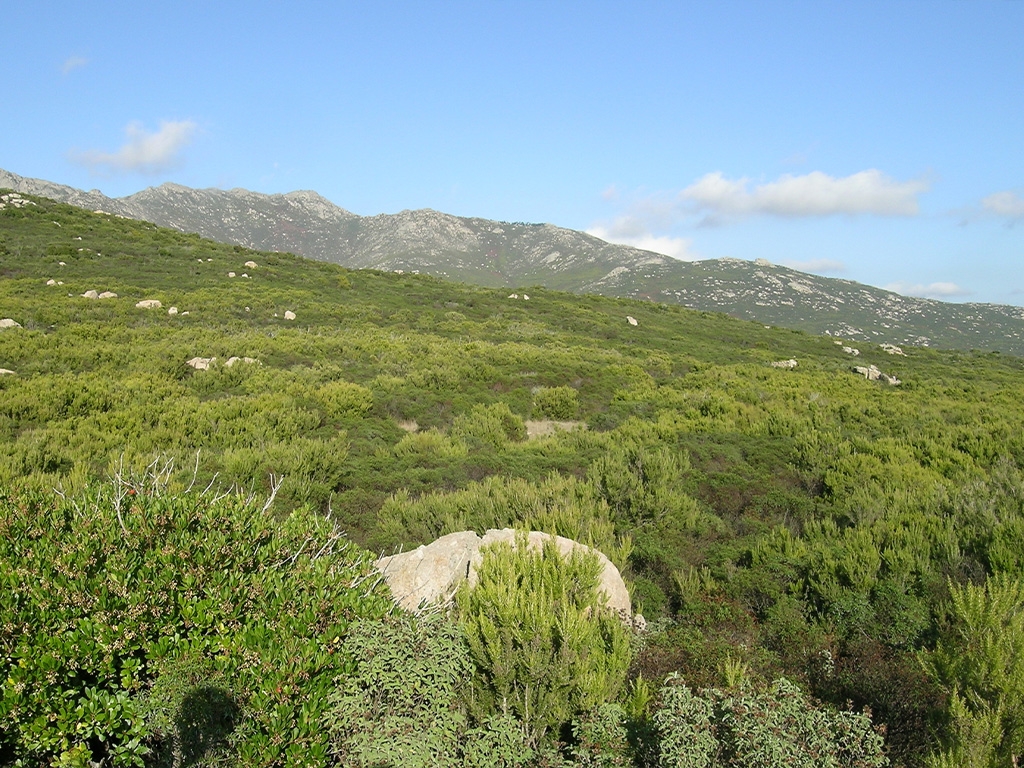
Necropolis of Piana della Sughera
The Piana della Sughera extends approximately 200 metres from east to west, some 350 metres above sea level, above the coastal hamlets of Seccheto and Fetovaia.
In the rural Elba of yesteryear, when every patch of land was cultivated, this place was used to grow spring wheat, and a large iron harrow used for cultivating this crop can still be seen near the path that crosses the plateau. This humble, flat area is most famous, however, for its historical heritage. Indeed, at the far ends of the plain there are ruins of an ancient necropolis from the megalithic era. On the eastern side, in 'Zone A', there are two burials with two large slabs of granite forming a cavity measuring approximately half a metre wide at the top and widening to 80 cm at the base. On the western side ('Zone B'), there are three structures with megalithic features: a menhir, nearly three metres tall but broken into two parts, at the point of a burial, the base, one metre tall, of another monolith, evidently broken, and a large burial with the space for the deceased surrounded by heaps of stones. Archaeologists, however, believe this burial to have been rearranged in more recent times. Nearby, there are also numerous stones driven into the ground, similar to the pietre fitte ('driven stones') found not far away in Corsica and Sardinia, marking out symbolic circles probably with funerary significance.
Between these two sites, the area has characteristics pointing to the presence of an ancient settlement.
The presence of the necropolis has sparked myths and legends in the popular imagination, and the sites have probably been damaged by thoughtless treasure hunters. Various hypotheses exist as to the origin of this archaeological area, and there are more megalithic sites on the southern slopes of Mount Capanne, including the famous Sassi Ritti site not far from the village of San Piero. The theory currently considered most viable by experts is that these monuments date from the period between the second and first millennia BC, ancient testaments to a megalithic culture also widespread in Corsica and Sardinia, associated with the early Metal Ages (end of the Copper Age to beginning of the Bronze Age).
(Antonello Marchese, translation from Italian)

